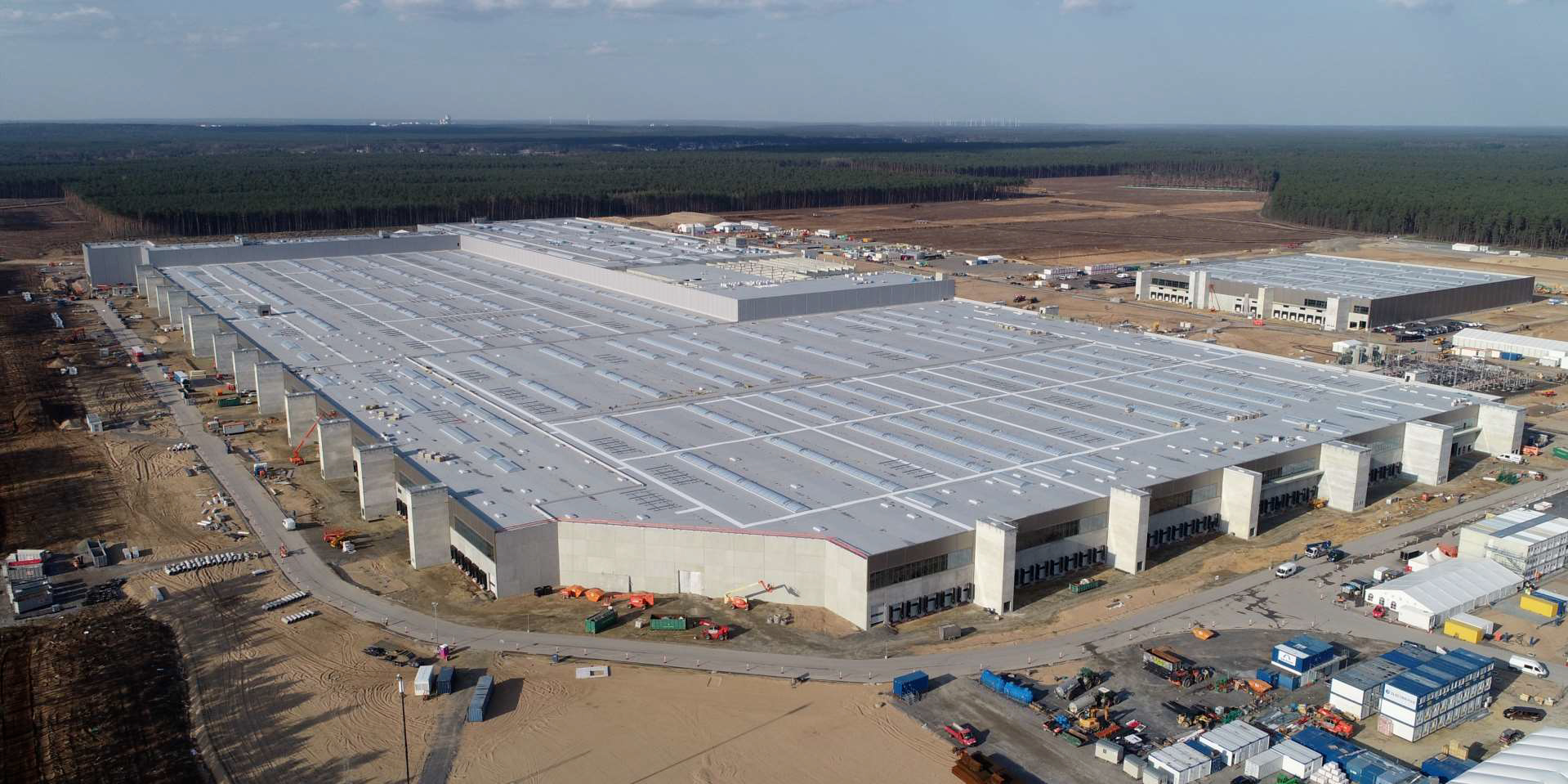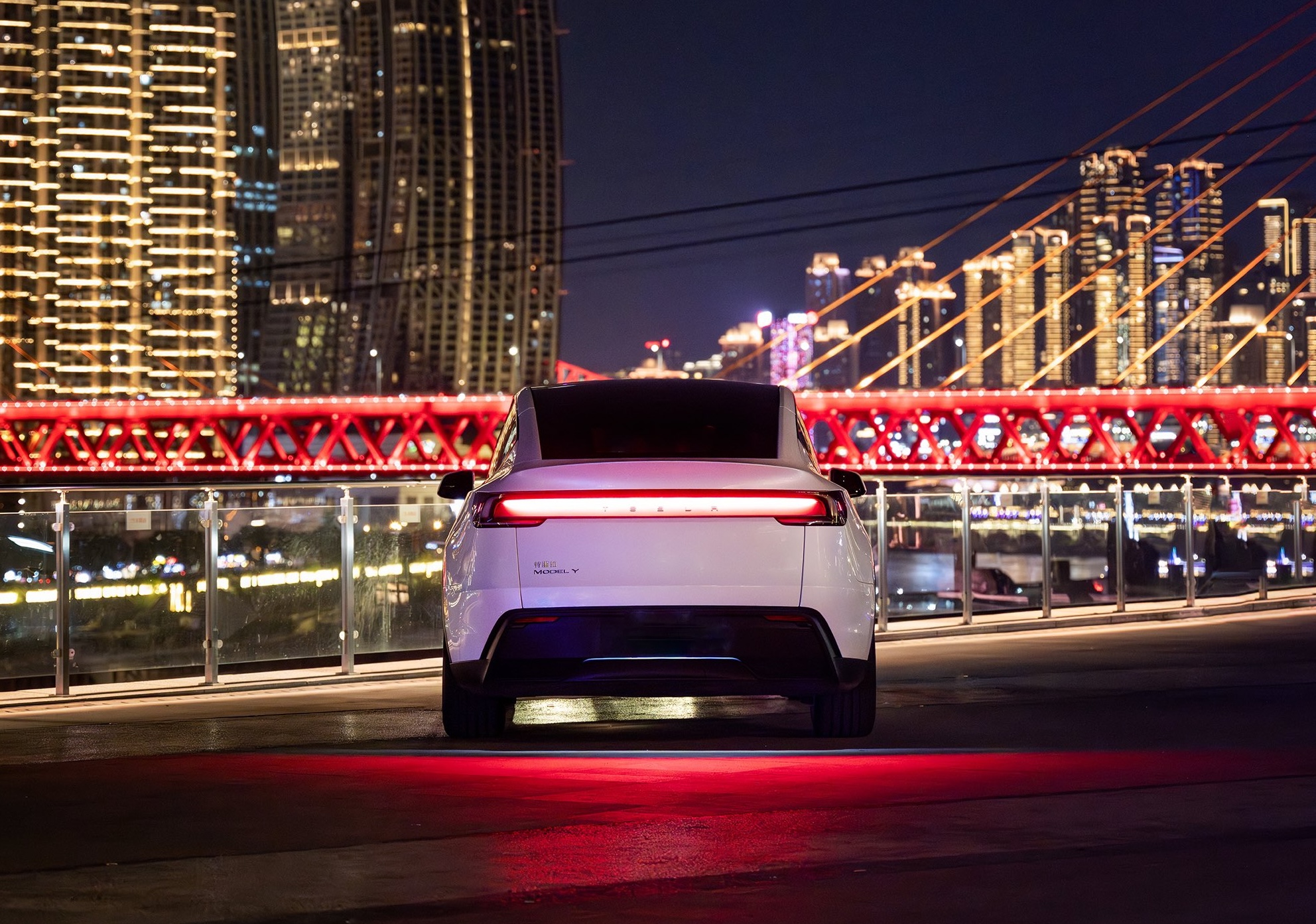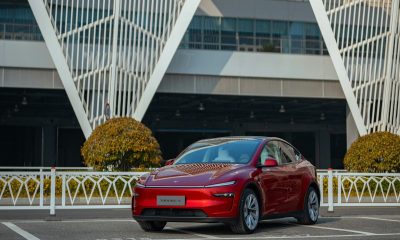

News
Tesla’s 4680 battery plant in Germany shouldn’t delay Giga Berlin’s initial production dates
Tesla’s Giga Berlin production facility is going to have a 4680 battery cell manufacturing plant on site. While some media outlets claim a delay in the Giga Berlin timeline should be expected due to the battery facility being added onto Tesla’s application, there isn’t any evidence to indicate that Tesla’s electric vehicles will be produced any later than the company expects.
The Tesla Giga Berlin production plant project has been one of the most anticipated vehicle manufacturing facilities in recent memory. But what started as Tesla’s way to introduce its products on a wider scale to the European market has become a long and drawn-out game of chess between the California automaker and German regulators. The most recent move in the plans occurred several days ago when Tesla finally decided to add its planned 4680 battery cell manufacturing plant to its application, bringing on the idea that the car company would be able to produce and install its own in-house batteries into its industry-leading electric cars.
However, the inclusion of the cell manufacturing plant in the newly revised application gives some the idea that Tesla’s project in Germany could sustain further delays. However, Teslarati sources in Germany say that the project shouldn’t incur any further delays; it will just require more deliberation on the part of the German authorities, who have the ultimate say in the project’s progress. While Tesla executives have recently voiced their discontent for the timeliness of the approval process, the sources indicate that German regulators are already talking about the inclusion of the 4680 battery factory at the Giga Berlin property, meaning the process, while deliberate, shouldn’t affect Tesla’s timeframes for initial EV production.
Tesla’s 4680 battery cells were unveiled at the company’s Battery Day in September 2020. The cells differ greatly from the 2170 cells by offering more energy, range, and power through numerous developments made by Tesla’s battery cell team.
Tesla originally planned to have Giga Berlin up and running later this year, and Summer 2021 was a timeframe that was commonly mentioned within the automaker’s plans. However, the ultimate authority who has the final say in when the electric vehicle manufacturing facility is the State Environmental Agency, who will now have to backtrack slightly as the application for Tesla’s production plant will need revisions due to the newly-included 4680 cell building will need to be considered. There is no separate application for the 4680 plant. Instead, it is simply added to the already-existing “master” application for the Giga Berlin facility.
“If this additional investment now flows into the permit application, it goes without saying that the application documents must be revised, and then the approval authorities have the last word,” Dietmar Woidke, Brandenburg’s Prime Minister, said, according to Automobilewoche. “We are well-advised to do everything we can to ensure that the entire permit for car production in Grünheide runs in a legally secure manner. The further process is currently being discussed.”
Tesla Giga Berlin’s battery factory deemed “very important” investment by minister
Woidke is a supporter of Tesla’s project and called the inclusion of the battery plant “positive news” for Germany as a whole. The plant, when finished, will provide a substantial number of employment opportunities for German citizens and will provide a healthy economic impact in the area.
German regulators have already taken their time with preliminary approvals for the facility due to refined and deliberate examinations of all elements involved. Tesla has been doing all of the work on the property without anything more than these preliminary approvals. Effectively, Tesla is running an “at-your-own-risk” construction project in Germany, and if regulators decide in a few months they do not want an electric vehicle manufacturing plant to operate in the area, Tesla will be required to bring the land back to its original state, assuming all financial risk. This scenario, while relatively unlikely, would be a blow not only to Tesla but the electric vehicle movement as a whole, as the largest EV company in the world would be extracted from the largest EV market in the world.
Tesla has likely come to the conclusion that the Summer production and delivery timeframe is not going to be achieved. In its latest Earnings Call Update Letter that was released on Monday, April 26th, the company said:
“In Europe, buildout of Gigafactory Berlin is continuing to move forward, with production and deliveries remaining on track for late 2021. Machinery for paint, stamping, castings, etc., continues to be moved into the building. In the meantime, we will continue to increase import volumes to Europe.”
However, the 4680 cell plant shouldn’t prolong Tesla’s initial vehicle manufacturing efforts. While the initial timeframes for vehicle production have been pushed back from the Summer to the end of the year, there is plenty of evidence to suggest that the 4680 plant’s inclusion will simply prolong Tesla’s construction efforts, and not necessarily the initial production effort’s start date.
News
Tesla China breaks 8-month slump by selling 71,599 vehicles wholesale in June
Tesla China’s June numbers were released by the China Passenger Car Association (CPCA) on Tuesday.

Tesla China was able to sell 71,599 vehicles wholesale in June 2025, reversing eight consecutive months of year-over-year declines. The figure marks a 0.83% increase from the 71,599 vehicles sold wholesale in June 2024 and a 16.1% jump compared to the 61,662 vehicles sold wholesale in May.
Tesla China’s June numbers were released by the China Passenger Car Association (CPCA) on Tuesday.
Tesla China’s June results in focus
Tesla produces both the Model 3 and Model Y at its Shanghai Gigafactory, which serves as the company’s primary vehicle export hub. Earlier this year, Tesla initiated a changeover for its best-selling vehicle, the Model Y, resulting in a drop in vehicle sales during the first and second quarters.
Tesla’s second-quarter China sales totaled 191,720 units including exports. While these numbers represent a 6.8% year-over-year decline for Tesla China, Q2 did show sequential improvement, rising about 11% from Q1 2025, as noted in a CNEV Post report.
For the first half of the year, Tesla sold 364,474 vehicles wholesale. This represents a 14.6% drop compared to the 426,623 units sold wholesale in the first half of 2024.
China’s competitive local EV market
Tesla’s position in China is notable, especially as the new Model Y is gaining ground in the country’s BEV segment. That being said, Tesla is also facing competition from impressive local brands such as Xiaomi, whose new YU7 electric SUV is larger and more affordable than the Model Y.
The momentum of the YU7 is impressive, as the vehicle was able to secure 200,000 firm orders within three minutes and over 240,000 locked-in orders within 18 hours. Xiaomi’s previous model, the SU7 electric sedan, which is aimed at the Tesla Model 3, also remains popular, with June deliveries surpassing 25,000 units for the ninth straight month.
While China’s EV market is getting more competitive, Tesla’s new Model Y is also ramping its production and deliveries. Needless to say, Tesla China’s results for the remaining two quarters of 2025 will be very interesting.
Elon Musk
Tesla reveals it is using AI to make factories more sustainable: here’s how
Tesla is using AI in its Gigafactory Nevada factory to improve HVAC efficiency.

Tesla has revealed in its Extended Impact Report for 2024 that it is using Artificial Intelligence (AI) to enable its factories to be more sustainable. One example it used was its achievement of managing “the majority of the HVAC infrastructure at Gigafactory Nevada is now AI-controlled” last year.
In a commitment to becoming more efficient and making its production as eco-friendly as possible, Tesla has been working for years to find solutions to reduce energy consumption in its factories.
For example, in 2023, Tesla implemented optimization controls in the plastics and paint shops located at Gigafactory Texas, which increased the efficiency of natural gas consumption. Tesla plans to phase out natural gas use across its factories eventually, but for now, it prioritizes work to reduce emissions from that energy source specifically.
It also uses Hygrometric Control Logic for Air Handling Units at Giafactory Berlin, resulting in 17,000 MWh in energy savings each year. At Gigafactory Nevada, Tesla saves 9.5 GWh of energy through the use of N-Methylpyrrolidone refineries when extracting critical raw material.
Perhaps the most interesting way Tesla is conserving energy is through the use of AI at Gigafactory Nevada, as it describes its use of AI to reduce energy demand:
“In 2023, AI Control for HVAC was expanded from Nevada and Texas to now include our Berlin-Brandenburg and Fremont factories. AI Control policy enables HVAC systems within each factory to work together to process sensor data, model factory dynamics, and apply control actions that safely minimize the energy required to support production. In 2024, this system achieved two milestones: the majority of HVAC infrastructure at Gigafactory Nevada is now AI-controlled, reducing fan and thermal energy demand; and the AI algorithm was extended to manage entire chiller plants, creating a closed-loop control system that optimizes both chilled water consumption and the energy required for its generation, all while maintaining factory conditions.”
Tesla utilizes AI Control “primarily on systems that heat or cool critical factory production spaces and equipment.” AI Control communicates with the preexisting standard control logic of each system, and any issues can be resolved by quickly reverting back to standard control. There were none in 2024.
Tesla says that it is utilizing AI to drive impact at its factories, and it has proven to be a valuable tool in reducing energy consumption at one of its facilities.
Elon Musk
Tesla analysts believe Musk and Trump feud will pass
Tesla CEO Elon Musk and U.S. President Donald Trump’s feud shall pass, several bulls say.

Tesla analysts are breaking down the current feud between CEO Elon Musk and U.S. President Donald Trump, as the two continue to disagree on the “Big Beautiful Bill” and its impact on the country’s national debt.
Musk, who headed the Department of Government Efficiency (DOGE) under the Trump Administration, left his post in May. Soon thereafter, he and President Trump entered a very public and verbal disagreement, where things turned sour. They reconciled to an extent, and things seemed to be in the past.
However, the second disagreement between the two started on Monday, as Musk continued to push back on the “Big Beautiful Bill” that the Trump administration is attempting to sign into law. It would, by Musk’s estimation, increase spending and reverse the work DOGE did to trim the deficit.
Every member of Congress who campaigned on reducing government spending and then immediately voted for the biggest debt increase in history should hang their head in shame!
And they will lose their primary next year if it is the last thing I do on this Earth.
— Elon Musk (@elonmusk) June 30, 2025
President Trump has hinted that DOGE could be “the monster” that “eats Elon,” threatening to end the subsidies that SpaceX and Tesla receive. Musk has not been opposed to ending government subsidies for companies, including his own, as long as they are all abolished.
How Tesla could benefit from the ‘Big Beautiful Bill’ that axes EV subsidies
Despite this contentious back-and-forth between the two, analysts are sharing their opinions now, and a few of the more bullish Tesla observers are convinced that this feud will pass, Trump and Musk will resolve their differences as they have before, and things will return to normal.
ARK Invest’s Cathie Wood said this morning that the feud between Musk and Trump is another example of “this too shall pass:”
BREAKING: CATHIE WOOD SAYS — ELON AND TRUMP FEUD “WILL PASS” 👀 $TSLA
She remains bullish ! pic.twitter.com/w5rW2gfCkx
— TheSonOfWalkley (@TheSonOfWalkley) July 1, 2025
Additionally, Wedbush’s Dan Ives, in a note to investors this morning, said that the situation “will settle:”
“We believe this situation will settle and at the end of the day Musk needs Trump and Trump needs Musk given the AI Arms Race going on between the US and China. The jabs between Musk and Trump will continue as the Budget rolls through Congress but Tesla investors want Musk to focus on driving Tesla and stop this political angle…which has turned into a life of its own in a roller coaster ride since the November elections.”
Tesla shares are down about 5 percent at 3:10 p.m. on the East Coast.
-

 Elon Musk2 days ago
Elon Musk2 days agoTesla investors will be shocked by Jim Cramer’s latest assessment
-

 News7 days ago
News7 days agoTesla Robotaxi’s biggest challenge seems to be this one thing
-

 News2 weeks ago
News2 weeks agoTesla’s Grok integration will be more realistic with this cool feature
-

 Elon Musk2 weeks ago
Elon Musk2 weeks agoElon Musk slams Bloomberg’s shocking xAI cash burn claims
-

 News2 weeks ago
News2 weeks agoTesla China roars back with highest vehicle registrations this Q2 so far
-

 News2 weeks ago
News2 weeks agoTexas lawmakers urge Tesla to delay Austin robotaxi launch to September
-

 News2 weeks ago
News2 weeks agoTesla dominates Cars.com’s Made in America Index with clean sweep
-

 Elon Musk1 week ago
Elon Musk1 week agoFirst Look at Tesla’s Robotaxi App: features, design, and more

















